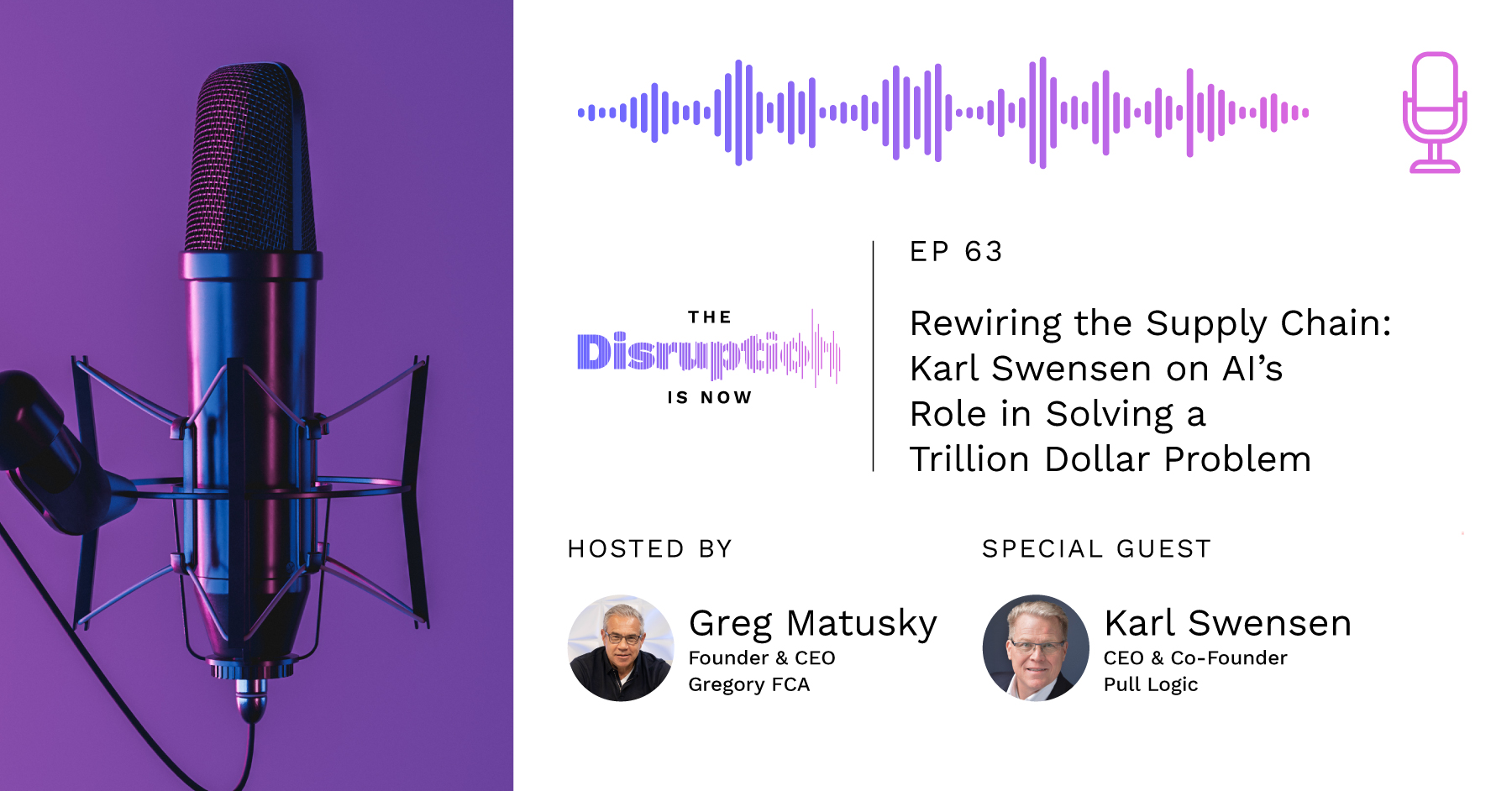AI is changing how retailers and manufacturers think about inventory. It’s no longer a guessing game, but a precise, customer-informed science.
Karl Swensen, CEO of Pull Logic, joined The Disruption Is Now to explain to host Greg Matusky how his company is using agentic AI to rethink the fundamentals of supply chain optimization and better predict consumer behavior.
With roots in logistics research at Georgia Tech, Swensen’s approach is revealing hidden costs, missed sales, and excess inventory that most businesses didn’t even realize they had.
Watch now:
Key takeaways
AI sees your inventory the way your customer does
Most inventory systems treat each product as an isolated SKU and calculate inventory needs with decades-old formulas. Pull Logic flips that model by asking what the customer actually wants, how willing they are to substitute, and how long they’re willing to wait.
For example, a customer may be happy with a dark blue version of a product if red is out of stock, but current systems don’t account for that.
Inventory optimization usually requires juggling dozens of metrics, such as fill rate, inventory turns, safety stock, and cycle stock. Pull Logic replaces all of that with one score, called product availability readiness (PAR), that makes inventory decisions clearer and smarter.
Swensen describes a dealer with an 82% PAR score as having an 18% loss rate for potential sales, which is instantly understandable. That simplicity makes it easier to get entire companies aligned around the same goal.
Agentic AI acts like a team of specialized coworkers
Instead of one big model trying to do everything, Pull Logic uses narrowly focused AI agents that specialize in tasks like demand forecasting, availability optimization, and even trailer logistics.
These agents work together like a team of experts, each contributing to a better understanding of where products should go and when. They’re designed to collaborate with humans — Swensen compares them to colleagues with specific roles. While they handle 95-98% of the workload, human oversight still matters, especially for edge cases.
Swensen says the models can now reconstitute true demand (not just sales), integrate weather and promotions, and optimize every step of the supply chain.
AI turns unproductive inventory into working capital
Swensen estimates that some customers are sitting on 35-40% more inventory than they need. Once the AI models identify what products actually contribute to PAR, companies can reallocate or reduce any excess.
That frees up warehouse space, working capital, and production capacity. The system also improves forecasting for future manufacturing needs by constantly updating demand trends — no more waiting for monthly batch reports.
Key Moments in the Conversation
- How Pull Logic grew from academic research into a startup (01:45)
- Why outdated inventory models ignore how real customers shop (03:29)
- PAR scores simplify complex consumer behavior into one number (05:11)
- How AI agents work together in Pull Logic’s system (08:20)
- Example of AI agents reshaping inventory planning (10:21)
- When dealer intuition clashes with data (13:14)
- How to reduce inventory by up to 40% while maintaining or improving sales (17:31)
- How spin classes help Swensen run a fast-growing AI startup (21:58)



